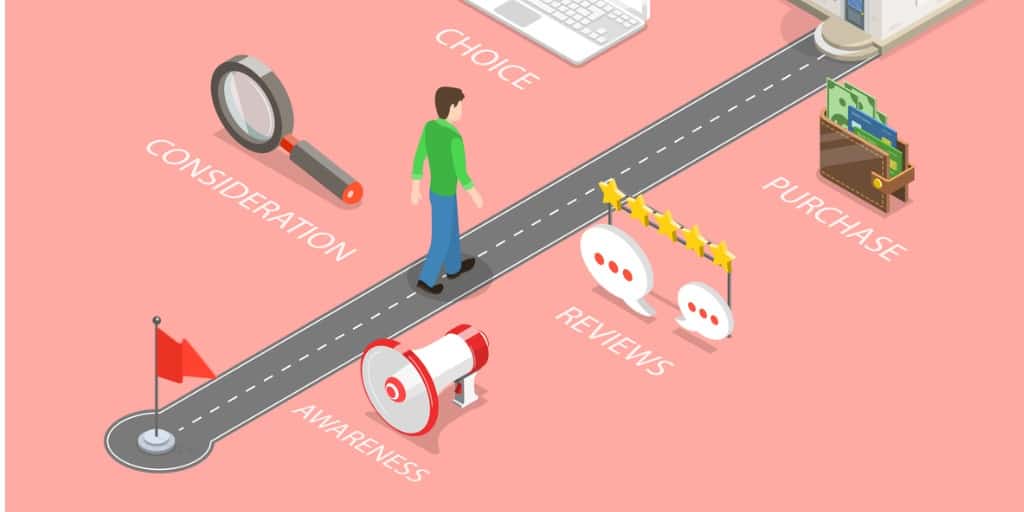
When most of us think about the products and/or services that we sell, we put a lot of thought into how we will market and gain awareness about our business.
There are many vehicles to market your business – be it online marketing, traditional advertising, media (such as TV or radio), or content marketing. Regardless of your marketing strategy, at some point, you are going to be on the receiving end of new leads.
Those leads are your prospective customers, and once they have identified themselves, it’s your responsibility to show them what you have to offer in a way that works for them to make a sale.
The question is: Are you presenting your company’s products and/or services in a way that entices them to move through your buying cycle? To do that effectively, I also have to ask: Have you ever taken the time to walk through their journey as a buyer? And is it from their perspective, rather than your own?
To illustrate this, I want to bring you back to an experience that I had in my previous business, which was in the home-and-garden retail industry. To experience our buyer’s journey through the eyes of our potential customers we would frequently walk outside the store and enter it again. By putting ourselves in their shoes and looking at our business through their eyes, we’d ask ourselves:
- What do we see?
- What are our first impressions?
With this exercise, we noticed a few things. Such as the debris at the entrance being an eyesore. The long line at the cashier showed that inefficiency. And the mop bucket by the restroom looked sloppy.
Beyond that, we had to consider the smaller things. Things that might not bother a person who is there day in and day out, but things that someone new would notice. One thing that used to drive me crazy was burnt out light bulbs. It is easy to skimp on the little things when you deal with your business for hours every day, but what about when you only enter the building one time? Suddenly the little things start to add up.
The same holds true for B2B businesses, like Tulip Media. Walking through our potential buyer’s journey, what do customers do when they express interest? One of the first things they will likely do is visit our website. Is it helpful to potential clients? When we click on our website, what’s the first thing we see? Is it simple and easy to understand? Does it bring me through a buyer’s journey? Or is it like most websites: put together based on our vantage point as business owners and the way we see our own company?
Unfortunately, what may seem relevant to you, as an owner or employee, is not often relevant to your customers. If someone wants to know about your company history, your values, and who you’ve worked within the past, they can find that on the relevant page. Should it be front and center? No. In fact, I would argue that not even your products or services should be listed first thing.
What should be front and center is information about the problem they have and the solution you have for them.
Only then should you go into detail about the products and services you offer. Don’t add unnecessary information to what should be a simple message and process.
This same principle applies to all of your marketing. It needs to be eye-catching and allow the customers to get to the next step as fast (and easy) as possible. If someone calls your office to inquire about their pain point and what you can do to help, how simple is your messaging and how many steps do they have to go through to actually get the reassurance that you can help them fix their problem with your product?
A great comparison is the journey of finding your spouse or life partner. When someone raises their hand to say they may be interested in you, you don’t jump right to a marriage proposal. You don’t even jump right into a dinner date. You might first go out for coffee and see how things go. The goal of the first meeting (coffee) is to get the first date. Then it’s to get together for dinner. The goals should be progressing in small steps from one to another. The last step is a proposal (and hopefully a “Yes”).
Your customers are the same. You want to give them a low barrier to entry so they feel good about moving on to the next step. If they want an account on your website, for instance, don’t badger them for a ton of information. Just get the minimum information you need and get the rest later.
If you want to be more successful in your go-to-market strategy, start thinking about putting yourself in the mindset of the people or companies who are coming to you. I challenge all of you to look at your business through an outside perspective rather than the one that you live with day in and day out. I think you would be shocked at the kind of insight this can provide and, ultimately, how much it can improve the experiences your customers have when they engage with you.
Good luck!
